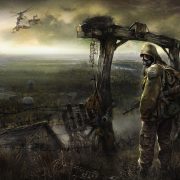To understand the importance of concept arts and 2D art production in video games, one must simply imagine video games without them. It’s possible to design a level without one, but that the end result would be – for the lack of a better word – lame.
As games became more visually complex, creating 2D art production for them became more important. Nowadays, if the devs plan to make any element of the game look good, they design a concept art for it first, no exception. This has caused many new specific professions to emerge, from character concept art to environment concept art. Gone are the days where you could just draw a couple of brown and red pixels on the screen and have yourself an iconic character like Super Mario.
Concept art has become the bread and butter of the early development of any game. How and why? Let’s get to it.
You Don’t Want a Party Where half of the Guests are Wearing Suits and the Other Half Pajamas
Concept art is the foundation of the creative process and shapes the final product. Concept art kickstarts the process of bringing a simple 2D image to life in the form of a fully-realized 3D world. The best way to describe it is the director of the visual symphony of a game.
And that’s exactly why it’s so important. Asking a team of game devs to design a level without concept art is like asking a group of musicians to play a symphony together without a director. They might be able to come up with something, but after a while, you start to notice a lack of unity. It’s like everyone is doing their own thing. (No offense to Jazz fans…)

A game without great concept art would end up being without identity, as far as visuals go. Games like Bloodborne, The Witcher 3 and The Last of Us owe their exceptionally beautiful visuals to the great concept arts designed for them. Imagine how cost-effective it is, to have the fantastic art direction these games offer with the price of one pretty 2D picture.
You Don’t Want a Comedy Soundtrack in Your Horror Movie
Another function of concept art is to set tone and atmosphere and subsequently, immerse the player in the game world. A good concept art not only gives visual cues on how something should look, but also how it should feel. Imagine a concept art featuring a post-apocalyptic city in which two people in gas masks are sitting behind fire and one of them is playing the guitar.
On the surface, this concept art shows how the city should look, but on a deeper level, it’s also saying that there should be a touch of mundanity and hopefulness in it. That’s a good feeling to work with and an indication of what the game designer has in mind. If you don’t design such a concept art and just tell everyone involved to design a post-apocalyptic city, that nuanced feeling might never be conveyed and the game devs design a city that is just dark and gloomy in a cliched manner.
So concept art helps the final game to be consistent and cohesive, at least visually.
You Don’t Want to Put People Who Don’t Understand Each Other’s Language on the Same Project
This function is a purely practical one: concept art helps to facilitate communication between members of the team and make sure everyone is on the same page. This is different from the first point in the sense that a group of game devs might be able to create a cohesive and united final product without the help of concept arts, but it’s just gonna be harder. It’s gonna lead to a lot of wasted work.

On the other hand, a good concept art can get the creative juices of the development team flowing and inspire them to recommend some interesting changes and additions to the general concept.
You Don’t Want to Deprive Yourself of Cool Pictures you Can Show Off
Do you remember the good old days where concept arts for video games were actually a collectible item that you could unlock and see in the menu? Concept arts were so cool that they were given out as rewards.
Nowadays, with the existence of the Internet and accessibility of everything, concept arts for any game are Googleable or collected in the game’s Wikia, so you won’t find them as unlockables as often as before. But they’re still widely used in the promotional materials for the games. The beauty of a great concept art – especially an environment concept art – is something to behold. So it’s a great way to attract attention towards your game.

All and all, concept art is a big deal when it comes to making video games. It’s like the blueprint for the whole game, it gives a clear idea of what the game world, characters and objects look like. And it’s not just about how the game looks, it sets the tone, the mood, and the atmosphere of the game. It’s also a guide for the 3D artists who bring the game world to life, and it helps to make sure that the game has a consistent and unique visual style. Finally, concept art makes for a pretty solid choice for promotional material. Without concept art, video games would look pretty boring and forgettable.
Published on:




















دیدگاه خود را ثبت کنید